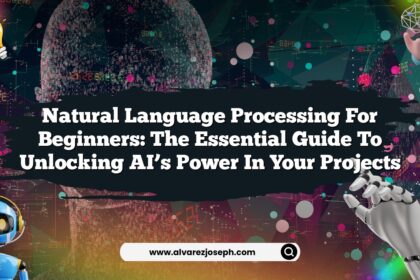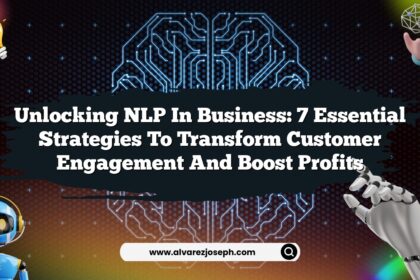The future of Natural Language Processing (NLP) is a captivating realm, filled with innovations that promise to transform how we communicate, learn, and interact with technology. Imagine a world where machines not only understand our words but also grasp our emotions, intentions, and contexts. Sounds like something out of a sci-fi movie, right? Well, hold onto your hats because the following trends are not just futuristic fantasies; they’re already on the horizon, reshaping our reality in ways we could only dream of a few years ago. Let’s dive into the seven game-changing trends that are set to revolutionize NLP and, consequently, our everyday communication.
Breaking Barriers: The Rise of Multilingual Models
In our increasingly globalized world, the ability to communicate across languages is more crucial than ever. Gone are the days of clunky translation services that often butcher meanings or miss cultural nuances. Enter multilingual models, which are designed not just to translate but to understand and convey the essence of conversations across different languages.
-
Unified Architecture: These models, like Google’s multilingual BERT, are trained on vast datasets encompassing multiple languages, allowing them to understand context and subtlety. Imagine a chat with a customer service bot that can seamlessly switch from English to Spanish, adapting its tone and style based on the user’s preferences.
-
Cultural Context: It’s not just about translation; it’s about cultural relevance. These advanced models can identify idiomatic expressions and local slang, making interactions feel more personal and engaging. Have you ever tried to explain a joke in another language? It rarely lands well! Multilingual NLP aims to change that.
But this isn’t where the story ends. As these models evolve, they will foster deeper connections between cultures, enabling more meaningful conversations.
Emotion Recognition: The Heart of Communication
Ever had a conversation where words just didn’t quite capture how you felt? NLP is stepping up to the plate with emotion recognition, allowing machines to not only process language but also gauge emotional undertones.
-
Sentiment Analysis: Tools like sentiment analysis can decode whether a text conveys joy, anger, or sadness. This is pivotal for businesses looking to enhance customer experience. Imagine receiving feedback from a customer who feels heard because the system detected their frustration and responded accordingly!
-
Voice Inflections: Beyond text, advancements in analyzing voice tones are bridging the gap between human emotions and machine understanding. Picture a virtual assistant that can tell when you’re stressed and gently adjusts its responses to offer support rather than mere facts.
This trend makes communication not just effective but empathetic. How might this shift the dynamics of customer service?
Conversational AI: More Than Just Chitchat
Conversational AI is revolutionizing how we interact with machines. Traditional chatbots often felt robotic and frustrating. However, the latest iterations are designed to engage in natural, flowing conversations.
-
Contextual Understanding: These advanced AIs can remember previous interactions, creating a more personalized experience. For instance, if you ask a virtual assistant about the weather, it will remember your location and preferences for future inquiries.
-
Human-like Interaction: With improvements in language generation models like GPT-4, these bots can engage in discussions that feel more human than ever. They can crack jokes, share stories, and even empathize with users—creating a comfortable environment for communication.
But how will we handle the ethical implications of machines that can mimic human conversation? This is a question that’s heating up the ethical debate in the tech community.
Voice-Activated Everything: The Future is Audible
Ever since Siri first graced our smartphones, voice recognition has been on a meteoric rise. As technology advances, we move towards a future where voice-activated systems become the norm across all devices, from home assistants to cars.
-
Hands-Free Convenience: Imagine cooking while your virtual assistant reads you a recipe or handling a video call while driving. This is not science fiction; it’s becoming our reality.
-
Enhanced Accuracy: With continual improvements in speech recognition accuracy, these systems can now understand diverse accents and dialects, making them accessible to a broader audience.
With voice-activated systems becoming an integral part of our lives, it raises the question: will we ever stop talking to our gadgets like they’re friends?
Generative Models: Creativity in Communication
In an era where creativity is highly valued, generative models are emerging as powerful tools in content creation. We’re talking about algorithms that can write poetry, craft stories, and even generate marketing content that resonates with audiences.
-
Personalized Content: Brands can utilize these models to create tailored messages for their customers, ensuring communications are not just generic but deeply relevant. Think about receiving a personalized birthday greeting from a brand that knows your preferences!
-
Inspiration for Creatives: Writers and artists can use these models as collaborative partners, providing ideas and suggestions that spark creativity. Have you ever had a writer’s block? Generative AI could provide that much-needed nudge to get the creative juices flowing.
The implications for the creative industry are vast, but are we ready to embrace AI in our creative processes?
Ethical Considerations: The Double-Edged Sword of NLP
As we hurtle toward a future filled with NLP advancements, the ethical implications cannot be ignored. With great power comes great responsibility, and the tech community is grappling with critical questions about data privacy, misinformation, and bias.
-
Data Privacy: How much of our communication is being analyzed and stored? As NLP systems become more capable, we need transparent policies to ensure user data is protected.
-
Misinformation: With generative models capable of producing convincing fake news, the potential for misuse is significant. Ensuring that these technologies are used responsibly is paramount.
-
Bias in AI: If the data fed into these models are biased, the outputs will reflect that. There’s a pressing need for diverse datasets to create fair and equitable solutions.
As we navigate these ethical waters, it becomes critical to hold discussions about the implications of NLP technology on society.
Real-Time Language Processing: Instant Communication
Imagine sitting in a meeting with colleagues from around the globe, and each person speaks their native language, yet everyone understands each other perfectly. This is the exciting potential of real-time language processing.
-
Live Translation: Advancements in NLP now allow for real-time translation, which can enable seamless communication during international conferences or global customer service interactions.
-
Enhanced Collaboration: This technology is not only for business but can also foster international friendships and collaborations, breaking down language barriers that have existed for centuries.
But how might this shape global diplomacy and international relations?
The future is undeniably bright for NLP, and these trends are just the tip of the iceberg. Each advancement opens doors to new opportunities and challenges that we must be prepared to navigate.
Quick Summary
- Multilingual Models are breaking down language barriers, enhancing communication across cultures.
- Emotion Recognition allows machines to understand emotional context, making interactions more empathetic.
- Conversational AI is evolving to engage users in natural, flowing discussions.
- Voice-Activated Systems are becoming ubiquitous, adding convenience to daily tasks.
- Generative Models are revolutionizing content creation, offering personalized and creative outputs.
- Ethical Considerations around privacy, misinformation, and data bias are critical as technology advances.
- Real-Time Language Processing enables seamless communication during global interactions and collaborations.
Frequently Asked Questions
What is the future of NLP in customer service?
The future of NLP in customer service lies in advanced chatbots and voice assistants that offer personalized, empathetic interactions, improving customer satisfaction.
How will multilingual models affect global communication?
Multilingual models will enhance global communication by allowing for seamless interactions between speakers of different languages, fostering understanding and collaboration.
Can NLP understand emotions accurately?
Yes, advancements in emotion recognition enable NLP to discern emotional tones in text and speech, allowing for more empathetic responses.
What ethical concerns exist with NLP technologies?
Concerns include data privacy, the potential for misinformation, and biases present in AI algorithms that could lead to unfair treatment of certain groups.
How do generative models impact the creative industry?
Generative models offer tools for content creators, assisting in idea generation and allowing for personalized marketing strategies that resonate with audiences.
Will voice-activated systems replace traditional interfaces?
While voice-activated systems are becoming increasingly popular, they are likely to complement rather than completely replace traditional interfaces, providing users with versatile options for interaction.
As we embark on this thrilling journey into the future of NLP, it invites us to consider how we will embrace these innovations. Will we adapt smoothly, or will we resist? That’s what makes this dance between man and machine so fascinating. So, how would you apply these advancements in your own life? The future is yours to shape!












